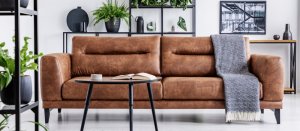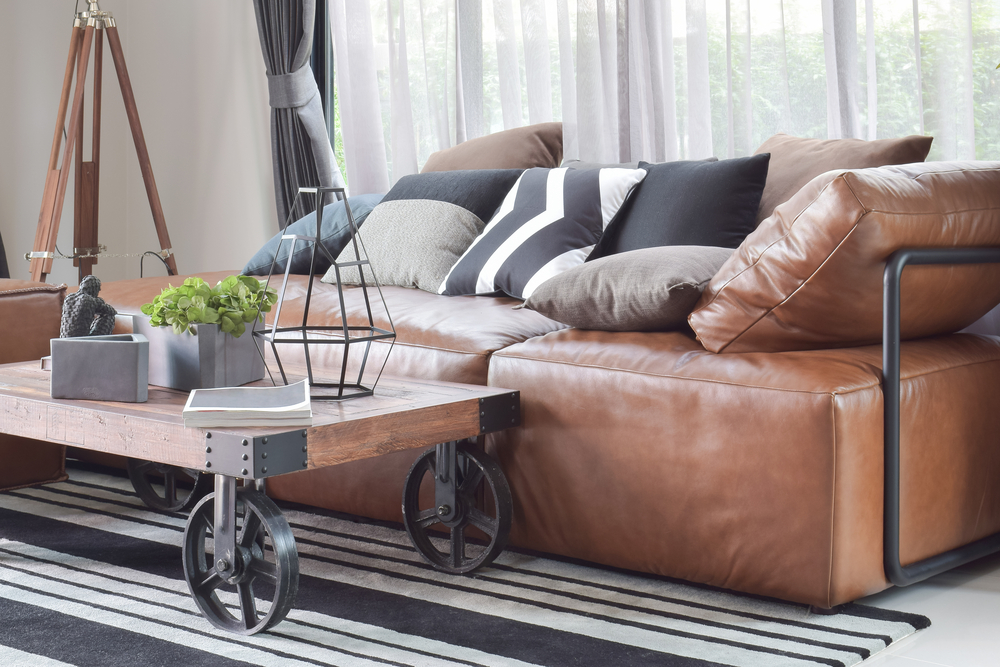The Advantages and Disadvantages of Leather Sofas

Leather sofas are a classic, but interior designers often find themselves in a bit of a love-hate relationship with them. Why is that? In this article, we want to tell you about the advantages and disadvantages of the leather sofa.
Choosing a high-quality sofa is very important. After all, the sofa is an integral part of any living room. As a result, choosing the right sofa can define the overall style and look of the room.
In fact, the sofa is an essential part of the home in general. It provides us with a place to sit back, relax and enjoy some downtime, watching films or reading a favorite book. Having a place where you are comfortable allows you to completely switch off from the outside world.
Why are leather sofas so popular?

Stylistically speaking, leather sofas have an almost timeless feel, working well in both classical and more contemporary style rooms. This trait makes them an element that never goes out of style.
Leather is undeniably one of the best materials on the market. Natural and unmatched in terms of quality, leather is strong, resistant, and needs very little upkeep to keep it looking great. It doesn’t really wear out over time either, looking as good as the day you bought it year after year.
Investing in a leather sofa is an investment in quality.
Different designs

Leather sofas come in a whole range of different designs. Let’s take a look at a few examples:
- Classical: when it comes to classical style sofas, there is one, in particular, you need to know about: the Chesterfield. Elegant and sophisticated, it was once a staple of British homes. It also makes the perfect addition to offices and hotel lobbies.
- Minimalist: while classical sofas usually come in natural tones (such as beiges and browns), minimalist sofas come in a whole range of different colors. Plus, they usually feature straight lines and rather austere designs. They work great in contemporary style, monochrome rooms.
- Rustic: Of course, we can’t forget one of the most popular interior decorating styles. Rustic sofas are great for creating that warm, homely feel.
Cleaning and maintenance

Some people believe that leather sofas are really high maintenance. However, this material easily repels most dirt, making maintaining your sofa really simple.
- To remove any dust and recent stains, all you need to do is go over your sofa with a damp cloth. Because leather is non-absorbent, it’s actually really easy to clean.
- We would only recommend using a leather cleaner around twice a year. The idea is that it will help your leather maintain its shine. Of course, you may also find you need to repair your leather sofa from time to time as it gets older.
Some of the disadvantages of leather sofas are:
- A large price tag: because it is such a high-quality material, leather sofas often come with a large price tag. They can actually be three times more expensive as a similar sofa in a different material, such as velvet.
- You might accidentally buy a synthetic leather sofa thinking that it’s real leather. These imitations can be practically identical to leather sofas but tend to wear out more quickly. However, this does mean they are generally cheaper.
- The temperature will have a direct effect on your sofa. Leather doesn’t retain heat, so cold temperatures will make the material cool to the touch.
- As for heat, leather usually remains at the ambient temperature. As a result, warm weather can make leather sofas feel sticky and oppressive, and can even make you sweat more than usual.
Leather sofas: further information

How comfortable you find your sofa will depend on the time of year. More specifically, it’s the temperature that will have the biggest impact. To prevent your sofa from becoming uncomfortable, you can use covers or throws. However, the material won’t be as visible and will lose some of its intended aesthetic function.
Before you make your purchase, it’s important to weigh up the various pros and cons, know exactly what it is you’re looking for in a sofa, what you’re going to use it for, and what style will work best in your living room.